Zoom Zoom: Selling caption space
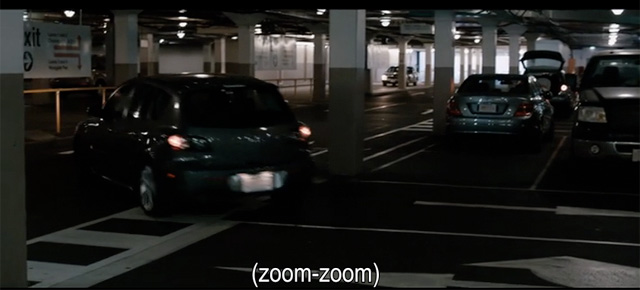
What if closed captions were bought and sold as a form of product placement?
Honoring the stewardship of texts?
Do commercial or outside interests have any influence over the display of closed captions? The other day I saw a captioned TV commercial for Boniva, a medication for treating osteoporosis in women. The closed captions were set in sentence case, except for the name of the product, which was set in upper case: BONIVA. Browsing the product’s official website, I quickly see that upper case is the manufacturer’s preferred way of displaying the product name, even though the name is not an acronym as far as I can tell. In this way, the manufacturer exhibits an influence over the typographic display of the product in the caption track.
Another example of commercial influence over captions is the sponsor’s message that muscles out a regular caption. In this screen grab (or power grab!) from the opening theme sequence to an episode of American Dad posted on Hulu, the sponsor’s message (with the sponsor’s name in all-caps again) squeezes out the last line of the theme song. This final line isn’t captioned, presumably because there isn’t enough time to include both sponsor’s message and theme song line. The sponsor wins out.
Commercial and outside influences on typographic style are troubling to typographers like Robert Bringhurst, who writes in The Elements of Typographic Style about opposing those companies who are “demanding an extra helping of capitals” for their products:
An increasing number of persons and institutions, from e.e. cummings to WordPerfect, now come to the typographer in search of special treatment. In earlier days it was kings and deities whose agents demanded that their names be written in a larger size or set in a specially ornate typeface; now it is business firms and mass-marketed products demanding an extra helping of capitals, or a proprietary face, and poets pleading, by contrast, to be left entirely in the vernacular lower case. But type is visible speech, in which gods and men, saints and sinners, poets and business executives are treated fundamentally alike. Typographers, in keeping with the virtue of their trade, honor the stewardship of texts and implicitly oppose private ownership of words. (p. 49, emphasis in original)
Although Bringhurst isn’t writing about closed captions, his critique of the “private ownership of words” seems to apply nonetheless. When captioning companies sway to the demands of “mass-marketed products” like Boniva to heap on the capital letters, do they stop honoring the “stewardship of texts”? Should manufacturers and captioners make typographic decisions that challenge readability, legibility, or good stylistic practices more generally?
Now, I realize that captioning companies are committed to providing the best service possible for deaf and hard of hearing viewers. I also realize that companies pay to have their content captioned and thus are entitled to say how it should be done. If someone at Genentech wants Boniva to be displayed as BONIVA in all their marketing materials (including captions), then that’s their right. But how far should they be able to go in imposing their will on the display of captions? Should design and typographic decisions be driven by companies or by the needs of caption users? Do captions belong to users or to the companies that pay to have them produced? Are captions a public good or merely a marketing tool? For Bringhurst, type belongs — or should belong — to the public. Can the same be said of closed captions?
This commercial got me thinking about how caption space is commercialized or otherwise used for purposes that can come into conflict with user-design or typographic principles.
If product placement extended to the caption layer
Are captions at risk of being taken over by more insidious commercial influences? What follows is meant as a parody; dismiss it as such if you like. But I think there’s an opportunity here to reflect on the reach of product placement and the sometimes insidious power of sponsors.
BONIVA is a pretty innocuous example. But can we imagine worst case scenarios in which captions are bought and sold as another form of product placement?
Here’s one hypothetical example. In the film Knowing (2009), Nicolas Cage and his son trail a Mazda to a parking garage. The car is most likely a 2007 Mazdaspeed 3. As it drives away, the sound it makes is captioned as “(ENGINE REVVING)” and “(TIRES SQUEALING).” What if, in a world where companies are always seeking new ways to extend the reach of product placement, Mazda not only supplied the vehicles but also sponsored and had some influence over the captions too? What if one or more sounds made by Mazda vehicles were captioned as “zoom-zoom”, thus performing the car company’s well-known zoom-zoom slogan?
Do we dismiss this revision as silly? Or does it point to a potential problem? In a world where product placement in movies is insidious, should the prospect of “placed” captions — i.e. captions that are paid for and influenced by sponsors — come as a surprise at all? Given the poor fit of some non-speech captions anyway (e.g. see “engine revving” above), I wouldn’t be surprised to find bought captions masquerading as neutral descriptions of the soundscape.
Reference
Bringhurst, Robert (2004) The Elements of Typographic Style. 3rd Edition. Point Roberts, WA: Hartley & Marks Publishers.
[Fair use notice: The videos on this site are transformative works used in good faith, in keeping with Section 107 of U.S. copyright law, and as such constitute fair use of copyrighted material. Read this site’s full fair use notice.]
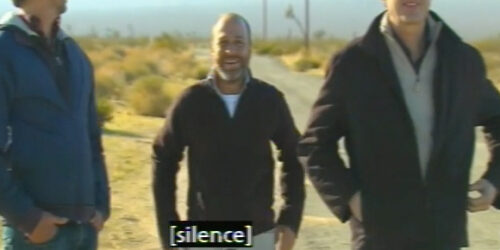
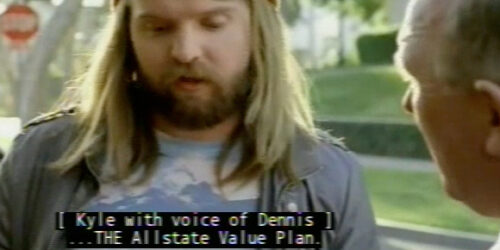
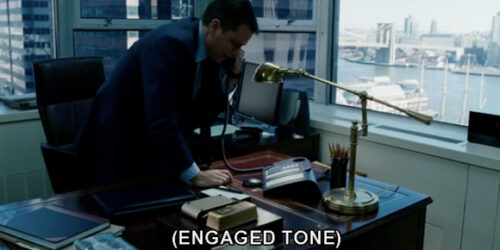

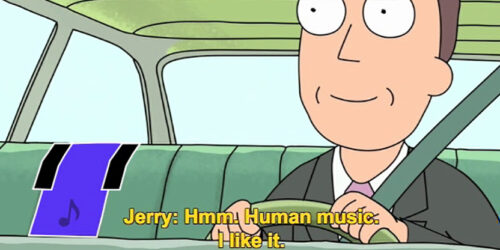

1 Response